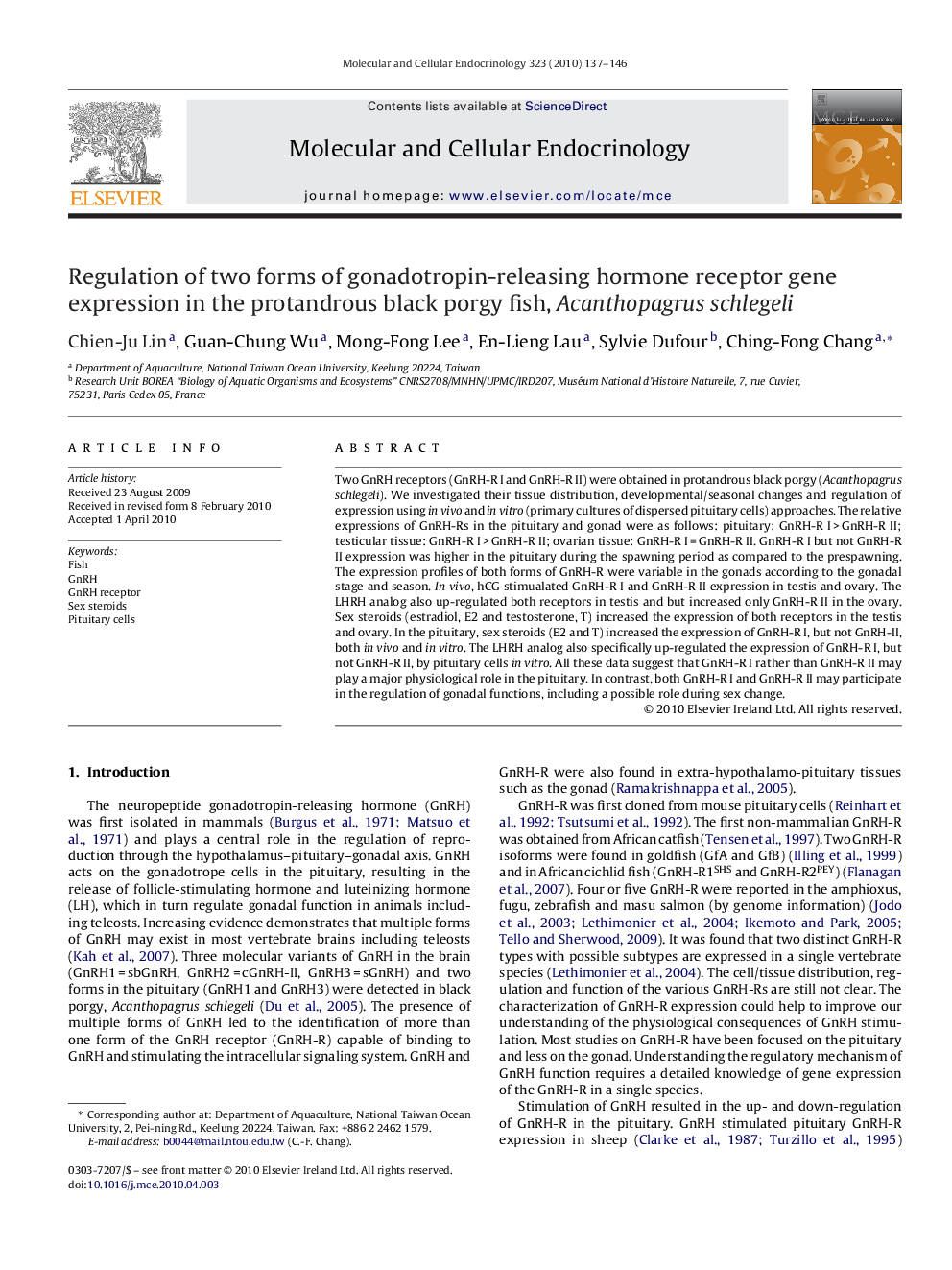| Article ID | Journal | Published Year | Pages | File Type |
|---|---|---|---|---|
| 2196766 | Molecular and Cellular Endocrinology | 2010 | 10 Pages |
Two GnRH receptors (GnRH-R I and GnRH-R II) were obtained in protandrous black porgy (Acanthopagrus schlegeli). We investigated their tissue distribution, developmental/seasonal changes and regulation of expression using in vivo and in vitro (primary cultures of dispersed pituitary cells) approaches. The relative expressions of GnRH-Rs in the pituitary and gonad were as follows: pituitary: GnRH-R I > GnRH-R II; testicular tissue: GnRH-R I > GnRH-R II; ovarian tissue: GnRH-R I = GnRH-R II. GnRH-R I but not GnRH-R II expression was higher in the pituitary during the spawning period as compared to the prespawning. The expression profiles of both forms of GnRH-R were variable in the gonads according to the gonadal stage and season. In vivo, hCG stimualated GnRH-R I and GnRH-R II expression in testis and ovary. The LHRH analog also up-regulated both receptors in testis and but increased only GnRH-R II in the ovary. Sex steroids (estradiol, E2 and testosterone, T) increased the expression of both receptors in the testis and ovary. In the pituitary, sex steroids (E2 and T) increased the expression of GnRH-R I, but not GnRH-II, both in vivo and in vitro. The LHRH analog also specifically up-regulated the expression of GnRH-R I, but not GnRH-R II, by pituitary cells in vitro. All these data suggest that GnRH-R I rather than GnRH-R II may play a major physiological role in the pituitary. In contrast, both GnRH-R I and GnRH-R II may participate in the regulation of gonadal functions, including a possible role during sex change.
